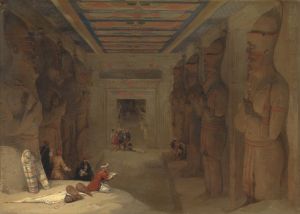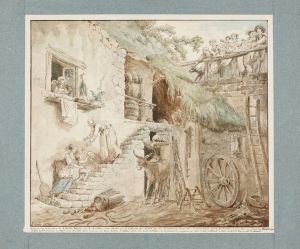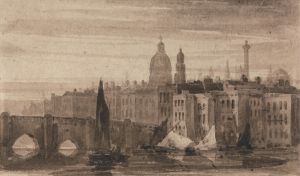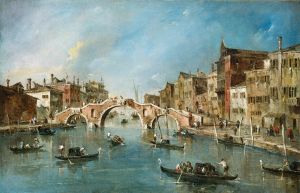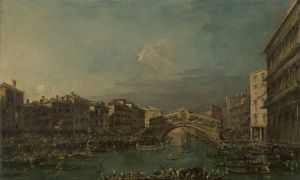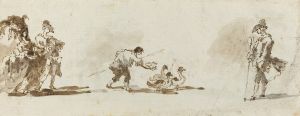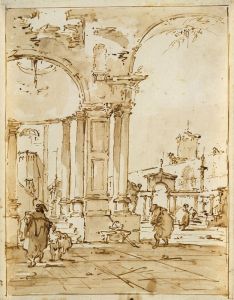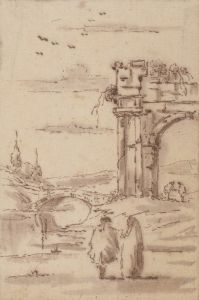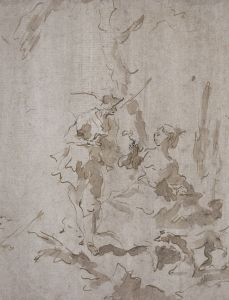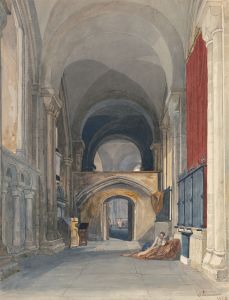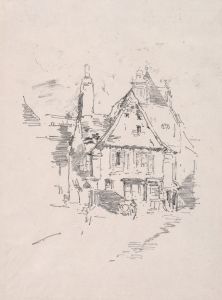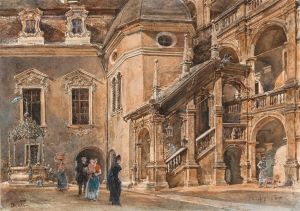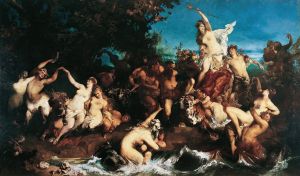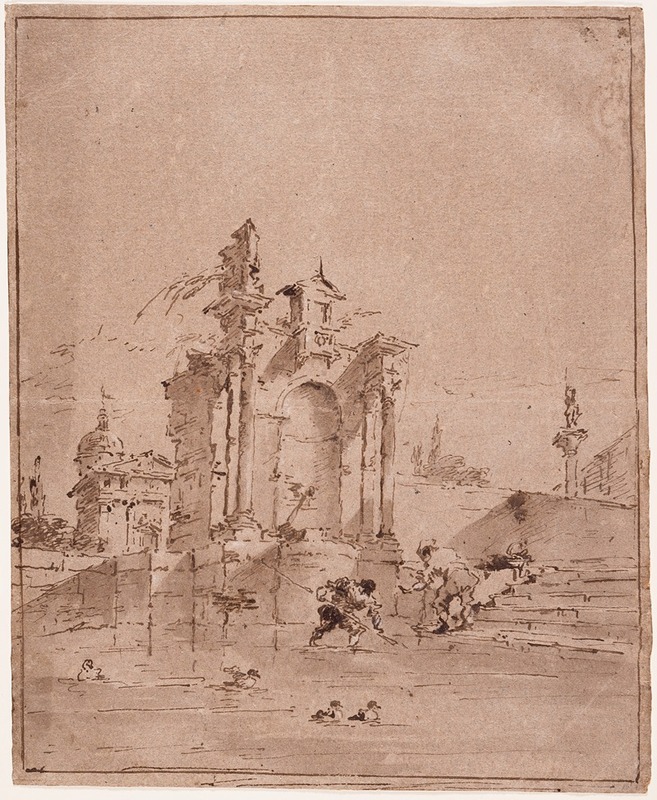
Architectural Capriccio
A hand-painted replica of Francesco Guardi’s masterpiece Architectural Capriccio, meticulously crafted by professional artists to capture the true essence of the original. Each piece is created with museum-quality canvas and rare mineral pigments, carefully painted by experienced artists with delicate brushstrokes and rich, layered colors to perfectly recreate the texture of the original artwork. Unlike machine-printed reproductions, this hand-painted version brings the painting to life, infused with the artist’s emotions and skill in every stroke. Whether for personal collection or home decoration, it instantly elevates the artistic atmosphere of any space.
Francesco Guardi, an eminent Venetian painter of the 18th century, is renowned for his captivating vedute, or cityscapes, which vividly capture the essence of Venice. Among his notable works is "Architectural Capriccio," a painting that exemplifies his skill in blending reality with imagination. Guardi was part of the Venetian school and is often associated with the Rococo movement, characterized by its ornate detail and vibrant colors.
"Architectural Capriccio" is a prime example of a capriccio, a genre of painting that combines architectural elements in fantastical and imaginative ways. Unlike traditional vedute, which depict real locations, capriccios are characterized by their creative liberties, often merging various architectural styles and elements into a single composition. This approach allows the artist to explore the aesthetic potential of architecture beyond the constraints of reality.
In "Architectural Capriccio," Guardi employs his mastery of light and shadow to create a dreamlike atmosphere. The painting features a series of architectural structures that, while reminiscent of Venetian architecture, are arranged in a manner that defies geographical and historical accuracy. This imaginative assembly of buildings invites viewers to explore a world that is both familiar and fantastical.
Guardi's technique in this painting reflects his broader artistic style, which is marked by loose brushwork and a keen attention to atmospheric effects. His use of color is particularly noteworthy, as he employs a palette that captures the luminous quality of Venetian light. The interplay of light and shadow in "Architectural Capriccio" not only enhances the three-dimensionality of the structures but also imbues the scene with a sense of movement and vitality.
The painting is also significant for its reflection of the cultural and artistic milieu of 18th-century Venice. During this period, Venice was a hub of artistic innovation, and the capriccio genre was popular among artists and patrons alike. Guardi's work in this genre can be seen as a response to the tastes and interests of his contemporaries, who were fascinated by the interplay of reality and imagination.
"Architectural Capriccio" is housed in various collections, with different versions and similar works attributed to Guardi found in museums and private collections worldwide. These paintings continue to be studied and admired for their artistic merit and their ability to transport viewers to a world where the boundaries between reality and fantasy are delightfully blurred.
Francesco Guardi's contribution to the art world extends beyond his capriccios. He is celebrated for his ability to capture the spirit of Venice, a city that has inspired countless artists throughout history. His works remain a testament to his skill and creativity, offering a window into the vibrant artistic landscape of 18th-century Venice. Through paintings like "Architectural Capriccio," Guardi invites us to appreciate the beauty of architectural forms and the power of imagination in art.





